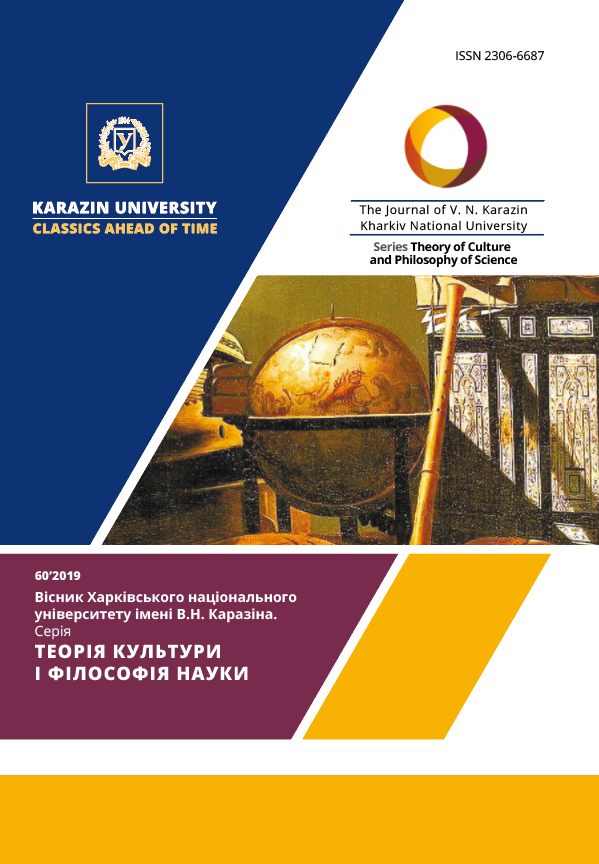Women in noir style
the soviet version
Abstract
The paper is devoted to a comparative analysis of the popular culture of the Cold War in the United States and in the USSR, namely, to the genres, which were stimulated by the public moods of the Cold War (noir, spy detective, etc.). It is argued that despite the refusal of Soviet critics to use Western terminology, the genres of noir and spy detective existed in the Soviet literature and cinema, but had their own national and cultural content. In particular, the images of “fatal women” and “female adventurers”, who were central in the noir poetics, were not typical in the Soviet popular culture, excluding works devoted to the life abroad (in particular, novels by A. Tolstoy “Emigrants”, “Hyperboloid of engineer Garin”, etc.), however, noir motifs have appeared in the Soviet literature and cinema since the mid-1950s, when the official optimism of the Soviet public culture has been replaced by emotions of disappointment and tragic past (after J. Stalin’s death and denunciation of his personality cult). The novels of the little-studied writers L. Ovalov (“The Copper Button”) and H.-M. Muguev (“Doll of Mrs. Bark”, “The Quiet City”, “Fire Paw”) were analyzed in the context of the biographies of their authors, gender politics of the novels and the Soviet concepts of “freedom” and the opposition of “friend” and “enemy”. It is proved that the images of “adventurers” and style in the spy novels by Ovalov and Muguev reproduce the poetics of “noir” in the Soviet literature, which looked as authentic view in depicting war, emigration, espionage, captivity, conspiracies, and other existential situations. It was argued that the noir motifs in the late Soviet cinema were used in depicting the bipolar and hostile world in the spy genre (“The Secret Agent’s Blunder”, “17 Moments of Spring”), and also in depicting the postwar period of Soviet culture, losses of ideals and destroying a large number of people’ destinies. It was argued that the “Soviet project” was not separated from the cultural mainstream of the 20th century, it experienced the influences of Western popular culture and its values.
Downloads
References
Ионин Л.Г. Социология культуры: путь в новое тысячелетие. - 3-е изд., перераб. и доп. // Леонид Ионин - Москва: Логос, 2000. - 431 с.
Зубкова Е. Послевоенное советское общество: политика и повседневность, 1945- 1953 / Елена Зубкова - Москва: РАН. Ин-т рос. Истории, 2000. - 230 с.
Кристева Ю. Самі собі чужі: Пер. з фр. - Київ: Видавництво Соломії Павличко «Основи», 2004 / Юлія Кристева – 262 с.
Колпакиди А.И. Энциклопедия военной разведки. 1918-1945 гг. / А. Колпакиди, М. Алексеев, В. Кочик - Москва: Кучково поле, 2012, - 976 с.
Левин М. Советский век: пер. с англ. / Мойше Левин. - Москва: Издательство «Европа», 2008. — 660 с.
Малви Л. Визуальное удовольствие и нарративный кинематограф / Лора Малви // Антология гендерной теории. – Мн. : Пропилеи. – 2000. – С. 280-297.
Barson M. Red Scared! The Commie Menace in Propaganda and Pop Culture / Barson Michael, and Heller Steven – San Francisco: Chronicle Books, 2001. — 120 p.
Britton W. Beyond Bond. Spies in Fiction and Film / W. Britton – Westport, Connecticut, London: Praeger, 2005. – 300 p.
Covey W. Girl Power: Female-Centered Neo-Noir / W. Covey. In: Film Noir. Reader 2. Ed. by A. Silver and J. Ursini. ‒ New York: Limelight Editions, 1999. ‒ P. 311-327
Doherty T. Cold War, Cool Medium: Television, McCarthyism and American Culture / Thomas Doherty. ‒ New York: Columbia University Press, 2003. — 320 p.
Fitzpatrick S. Everyday Stalinism: Ordinary Life in Extraordinary Times: Soviet Russia in the 1930s. / Sheila Fitzpatrick – Oxford University Press, 1999. – 280 p.
Hayward S. Cinema Studies. The Key Concepts. / Susan Hayward – Routledge, London and New York, 2000 – 528 p.
Hepburn A. Intrigue. Espionage and Culture / Alan Hepburn – New Haven and London: Yale University Press, 2005. – 352 p.
Hofstadter R. The Paranoid Style in American Politics and Other Essays / Richard Hofstadter. – Cambridge, MA: Harvard University Press, 1996. – 368 p.
Lindner Ch. The James Bond Phenomenon: A Critical Reader / Ch. Lindner – Manchester Un. Press, 2003. – 272 p.
Shaw T. Cinematic Cold War: The American Struggle for Hearts and Minds / Shaw Tony, Youngblood Denise. ‒ Kansas: University Press of Kansas, 2010. – 312 p.
Schrecker Ellen W. Age of McCarthyism: A Brief History With Documents. / Ellen W. Schrecker – Bedford: St. Martin's, 2001. ‒ 308 p.
Tracey G. Film noir and Samuel Fuller’s Tabloid Cinema: Red (Action), White (Exposition) and Blue (Romance) / G. Tracey. In: Film Noir. Reader 2. Ed. by A. Silver and J. Ursini. ‒ New York: Limelight Editions, 1999. ‒ p. 160 (159-173 p.)
Zickmund S. Approaching the Radical Other: The Discursive culture of Cyberhate / S. Zickmund // The Cybercultures Reader. Ed. by D. Bell and B.M. Kennedy.- Routledge, 2000.- P. 237-253
Whitfield S. The Culture of the Cold War / S. Whitfield – JHU Press, 1996. – 275 р.




